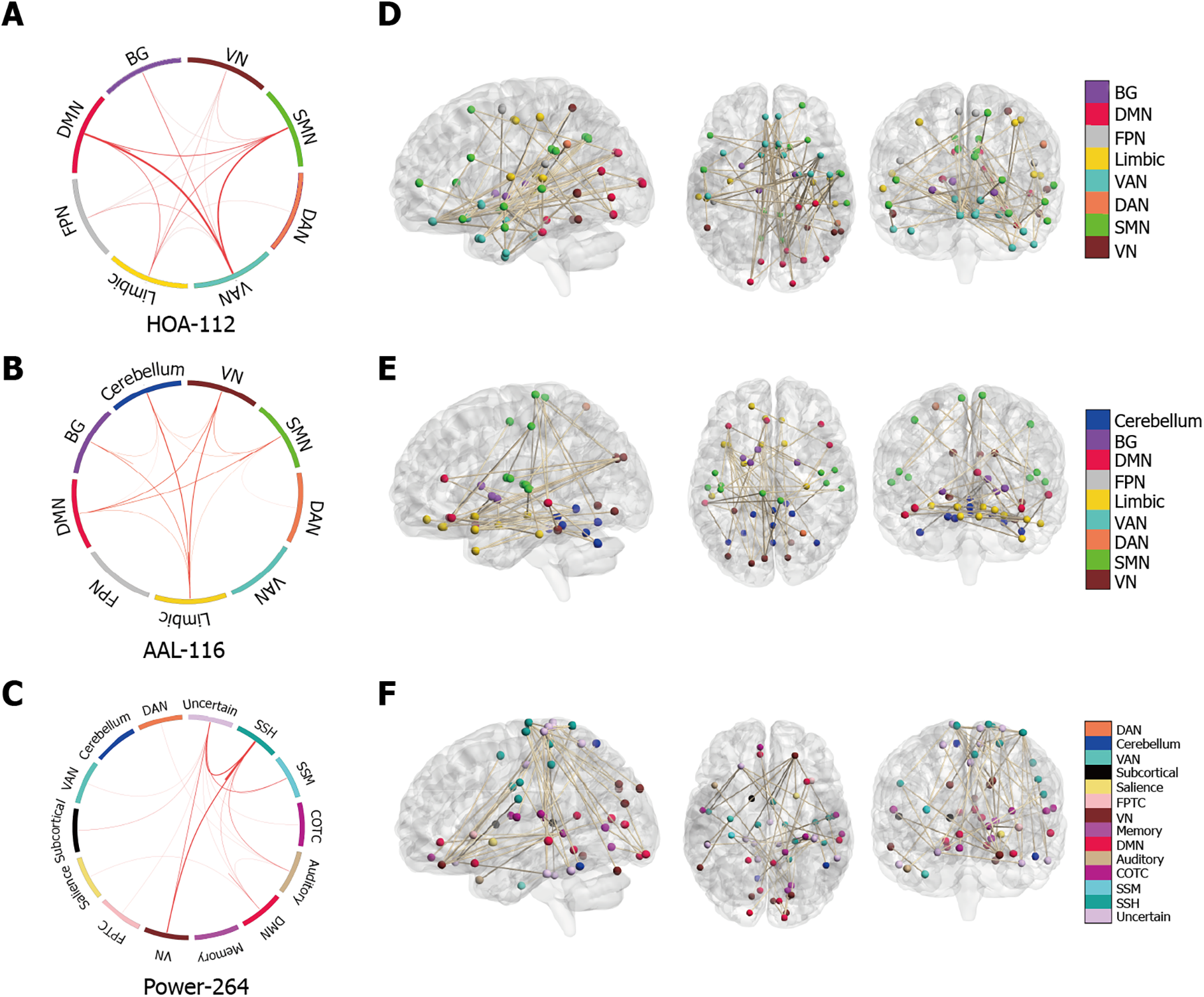Copyright
©The Author(s) 2022.
World J Diabetes. Feb 15, 2022; 13(2): 110-125
Published online Feb 15, 2022. doi: 10.4239/wjd.v13.i2.110
Published online Feb 15, 2022. doi: 10.4239/wjd.v13.i2.110
Figure 3 Functional connections predicting individual Montreal Cognitive Assessment scores based on three atlases.
A-C: On the far left of the image above, edges were classified as macroscale brain regions, and visualized by circle plots, in which nodes are grouped based on their anatomic location. The resting-state network (RSN) of the brain based on three templates is represented by a rectangle on the circumference of the big circle. The lines connecting two rectangles represent the connections between the corresponding one or two RSNs, including inter-network connections and intra-network connections. The thickness of the line represents the weight (i.e., connectome-based predictive modeling weight) of the connection. The thicker the line, the larger the weight. This visualization was created using Circos (http://circos.ca/). D-F: On the right of the image above, the same edges are visualized in the brain. The lines represent edges connecting the spheres, which in turn represent nodes. A legend indicating the approximate anatomic ‘lobe’ is shown in the far right side of the figure. HOA -112: Harvard Oxford atlas; AAL-116: Automated Anatomical Labeling; Power-264: 264-region functional atlas introduced by Power et al; VN: Visual Network; SMN: Sensory-motor Network; DAN: Dorsal Attention Network; VAN: Ventral Attention Network; Limbic: Limbic System; FPN: Fronto-parietal network; DMN: Default mode network; BG: Basal ganglia; SSH: Sensory somatomotor hand; SSM: Sensory somatomotor mouth; COTC: Cingulo-opercular task control; Memory: Memory retrieval; FPTC: Fronto-parietal task control.
- Citation: Shi AP, Yu Y, Hu B, Li YT, Wang W, Cui GB. Large-scale functional connectivity predicts cognitive impairment related to type 2 diabetes mellitus. World J Diabetes 2022; 13(2): 110-125
- URL: https://www.wjgnet.com/1948-9358/full/v13/i2/110.htm
- DOI: https://dx.doi.org/10.4239/wjd.v13.i2.110









